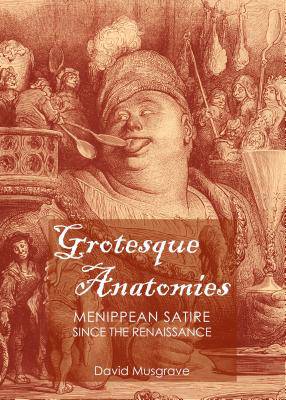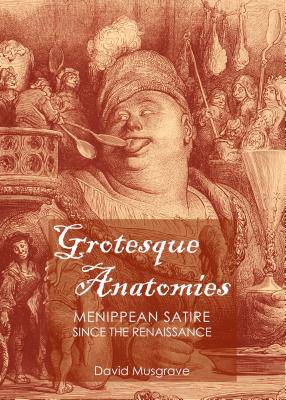
- Retrait gratuit dans votre magasin Club
- 7.000.000 titres dans notre catalogue
- Payer en toute sécurité
- Toujours un magasin près de chez vous
- Retrait gratuit dans votre magasin Club
- 7.000.0000 titres dans notre catalogue
- Payer en toute sécurité
- Toujours un magasin près de chez vous
Grotesque Anatomies: Menippean Satire Since the Renaissance
Menippean Satire since the Renaissance
David Musgrave
Livre relié | Anglais
62,95 €
+ 125 points
Description
Grotesque Anatomies is a study of Menippean satire in English since the Renaissance. It consists of revisionist, close readings of canonical works such as Eliot's The Waste Land and Pope's Dunciad among others, and investigates how identifying them as Menippean satires changes our understanding of them. The initial chapter offers a comprehensive account of the form from antiquity to the present day, identifying its bifurcated development in the shorter form (Seneca-Lucian-Julian) and the longer, more encylopedic form (Varro-Petronius-Boethius), and their subsequent fusion during the Renaissance. It also contains an account of the critical reception of the genre, with the term Menippean satire first being used by Justus Lipsius in 1581. Finally, Menippean satire is described as a literary version of the grotesque, and a brief theory of the grotesque in the modern period as radical heterogeneity is outlined. This is also the foundation of a new definition of Menippean satire, drawing on previous definitions by Frye, Bakhtin and Kirk, and revising them for the modern period. The following chapters examine iconic works as examples of Menippean satire and of the grotesque. Chapter 2 offers an overview of the nose in Menippean satire and comic literature generally, and reads Rushdie's Midnights Children in this context. It also gives an account of metaphor as a grotesque transformation. Chapter 3 examines the figure of the stomach in Menippean satire and symposiastic literature, and reads Peacock's Gryll Grange in this context. The link between the stomach as a figure of thinking in comic literature is the basis for an account of symbolic structuring as grotesque association. Chapter 4 is a close reading of the scatological imagery of Pope's Dunciad, and how scatology generally tends towards a cyclical metaphysics. It also relates changes in print technology and copyright laws to the reticular scatological structure of the Dunciad. Chapter 5 argues for Eliot's The Waste Land as a Menippean satire, focusing on the rhetorical figure of the enthymeme as a missing premise, as an example of under-mindedness and as an ironic aspect of the fragmentation typical of late Romantic Menippean satires. Chapter 6 examines Urquhart's eccentric The Jewel as a satire on the referential function of language, reading it in the context of projections for a universal language from this period. The final chapter identifies some key works by Derrida and Barthes as Menippean satires, noting the resurgence of the form in some postmodern and deconstructive writing.
Spécifications
Parties prenantes
- Auteur(s) :
- Editeur:
Contenu
- Nombre de pages :
- 240
- Langue:
- Anglais
Caractéristiques
- EAN:
- 9781443856775
- Date de parution :
- 01-05-14
- Format:
- Livre relié
- Format numérique:
- Genaaid
- Dimensions :
- 154 mm x 213 mm
- Poids :
- 494 g

Les avis
Nous publions uniquement les avis qui respectent les conditions requises. Consultez nos conditions pour les avis.






